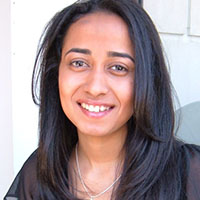About
Biology is being revolutionized by new experimental techniques that have made it possible to quantitatively query the inner workings of molecules, cells and multicellular organisms in ways that were previously unimaginable. The objective of this course is to respond to this deluge of quantitative data through quantitative models and the use of biological numeracy. The bootcamp will explore the description of a broad array of topics from modern biology using the language of physics, mathematics and computation. One style of thinking we will emphasize imagines the kinds of simple calculations that one can do with a stick in the sand.
We will draw examples from broad swaths of modern biology from our department and beyond including cell biology (signaling and regulation, cell motility), physiology (metabolism, swimming), developmental biology (patterning of body plans, how size and number of organelles and tissues are controlled), neuroscience (action potentials and ion channel gating) and evolution (population genetics) in order to develop theoretical models that make precise predictions about biological phenomena. These predictions will be tested through the hands-on analysis of experimental data and by performing numerical simulations using Python.
Quantitative biology will be introduced as an exciting new tool to complement other approaches within biology such as genetics, genomics and structural biology. The course will introduce students to the enabling power of biological numeracy in scientific discovery and make it possible for them to use these tools in their own future research.
Note that no previous coding or advanced math skills are required. The course is designed with the objective of being widely accessible. Further, interested students will have the opportunity to participate in evening experimental rotations in several labs aimed at learning how experiments to obtain the type of quantitative data that our models will be talking to are implemented and executed.
The syllabus for the course can be found here.
When and where
Lecture: Friday 8/13/25 through Friday 8/22/25, 9:00am–4:30pm, IGI Conference Room. Note that there will be no bootcamp on 8/18/25 and 8/19/25.
Quantitative courses at Berkeley
A list of computational and quantitative biology courses at Berkeley can be found here.
People
Instructors:

Hernan Garcia
(MCB/ Physics)

Priya Moorjani
(MCB/ Computational Biology)
Graduate Student Instructors:


Yovan Badal
(Physics)

Aaron Fultineer
(Physics)
Course structure
A typical day in the bootcamp looks like this:
-
9:00am–12:00pm: Lectures, hands-on activities and copious amounts of coffee.
-
12:00pm–12:30pm: Lunch (provided).
-
12:30pm–1:30pm: Research talk from Berkeley faculty members on their research in quantitative biology. We aim for these talks to be of high pedagogical value, so interruptions and questions are encouraged!
-
1:30pm–2:00pm: Breakout session between the students and the speaker. These sessions are perfect venues to ask follow up questions about the talk, but to also learn about the speaker’s career path.
-
2:00pm–4:00pm: More lectures, hands-on activities and coffee.
-
4:00pm–4:30pm: Study hall to work on final project.
-
5:00pm: Optional experimental rotations (see more below).
Speakers
| Number | Date | Speaker | Title |
|---|---|---|---|
| 1 | 8/13 |
Liana Lareau |
Counting |
| 2 | 8/14 |
Ian Swinburne |
Uncovering new principles of development using quantitative live imaging and analysis |
| 3 | 8/15 |
Allon Wagner |
TBD |
| 4 | 8/20 |
Priya Moorjani |
TBD |
| 5 | 8/21 |
Carlos Bustamante |
Transcription through the nucleosome one molecule at a time |
| 6 | 8/22 |
Bronwyn Lucas |
Visualizing molecular assembly lines in cells with cryo-EM and template matching |
Experimental Rotations
Sign up for experimental rotations here (signups are now closed, contact Yovan or Aaron if you need to make any changes). Please sign up only for dates and times you can attend.
| Number | Lab (instructor) | # days and dates available | Project(s) description |
|---|---|---|---|
| 1 | Garcia Lab (Brandon Schlomann) | 8/21 | Spatial patterning of immune responses in flies with light sheet fluorescence microscopy |
| 2 | Garcia Lab (Andrea Herman) | 8/19, 8/21 | Measuring gene regulation in space and time |
| 3 | Yildiz Lab (Joseph Slivka) | 8/19, 8/20, 8/21 | Using super-resolution microscopy to visualize nanometer size biomolecular motor steps |
| 4 | Bustamante Lab (Francesca) | 8/21 | Tracking Transcription-Coupled Nuclear Factors Binding Using Single-Molecule Optical Tweezers and Confocal Microscopy |
| 5 | Bustamante Lab (Jason) | 8/22 | Following individual transcription trajectories by Pol II across the nucleosome |
| 6 | Fletcher Lab (Lena Blackmon) | 8/15 | Intro to microscopy; building a microscope a la BIOE168L |
| 7 | Swinburne Lab (Maria) | 8/14 | Live imaging while "poking" fluid-filled organs in zebrafish embryos with magnetic droplets |
Syllabus
The full syllabus for the course can be found here